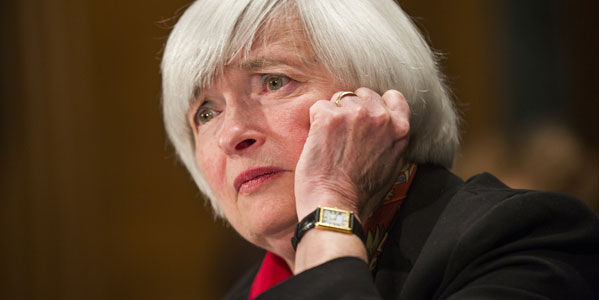Investors should focus on the financial sector as the probability of a rising interest rate environments becomes more likely, notably bank-related exchange traded funds that can capitalize on a steepening yield curve.
Minutes from the Federal Reserve’s April meeting showed that the central bank was readying for an interest rate hike in June if economic conditions do not deteriorate. Policy makers are less concerned about risks posed by the global economic and financial conditions and pointed to strengthening U.S. labor market. Consequently, Fed officials said an interest rate increase in June is on the table if economic data remains strong.
Financial entities like banks will benefit from expanding margins as rates climb. A rising rate environment may reflect a strengthening U.S. economy, and a healthier economy would help borrowers have an easier time repaying loans, with banks stuck with fewer non-performing assets. Moreover, rising rates means that banks will generate greater revenue from the spread between what they pay deposit savers and the prime rates they charge credit-worthy clients and other highly-rated debt.
Related: 6 Bank ETFs’ Moment in the Sun
Financial services firms, like capital markets, banks and regional banks, are among the top three industries with the highest sensitivity to changes in the 10-year Treasury yield. Over the past few years, financial stocks have underperformed the broader equities market as the Fed’s robust quantitative easing program and low interest rate policy caused the yield curve to flatten – a yield curve flattens when yields on long-term debt declines more rapidly than the yield on short-term debt, which causes a smaller spread between long- and short-term debt securities.
With interest rates poised to rise, financial services and banks could be in for an extended period of leadership.
The broad Financial Select Sector SPDR (NYSEArca: XLF), which includes a 33.8% tilt toward banks, has been a go-to option for financial sector exposure. However, investors can also take on more targeted exposure to the banking sector through ETF options.
For instance, the SPDR S&P Bank ETF (NYSEArca: KBE) and PowerShares KBW Bank Portfolio (NYSEArca: KBWB), which lean toward larger companies, rose 3.1% and 2.9%, respectively. KBWB follows a market cap-weighted index, which make the index heavy on prominent banking names, including Citigroup (NYSE: C) 8.2%, Bank of America (NYSE: BAC) 8.2% and JPMorgan Chase & Co (NYSE: JPM) 7.9%, among others. KBE, on the other hand, tracks an equal-weight indexing methodology, with the largest position in Comerica Incorporated (NYSE: CMA) at 2.4%, so the ETF will include a greater tilt toward mid-cap banks.
[related_stories]Investors can also target smaller names through the SPDR S&P Regional Banking ETF (NYSEArca: KRE), the largest regional bank-related ETF, along with the iShares U.S. Regional Banks ETF (NYSEArca: IAT) and PowerShares KBW Regional Bank Portfolio (NYSEArca: KBWR).
